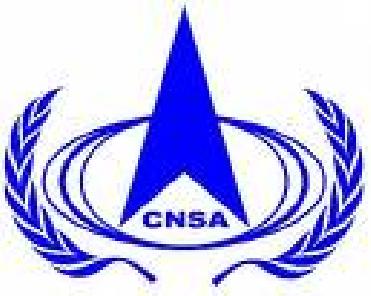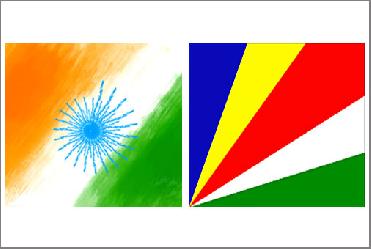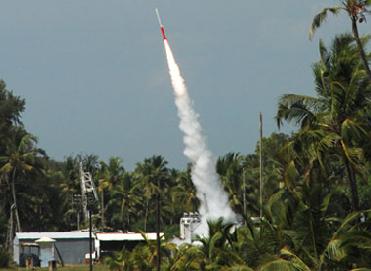NEW DELHI (BNS): The Union government on Thursday approved Rs 774-crore for India�s ambitious Gagan (GPS Aided Geo Augmented Navigation) project that would significantly improve navigation in Indian waters and airspace.
Gagan would provide straight-line fuel-efficient air routes and guide aircraft in the airspace. It would also help reduce the air congestion. The project when completed would place India in a select group of nations including the US and European Union with such systems.
The Airports Authority of India (AAI) and ISRO (Indian Space Research Organisation) will jointly fund the project.
�Ex-post facto approval has also been given to the amount of Rs148 crores already spent in the first phase of the project. With this, India will be the fourth country in the world to have a satellite based navigation system,� the government said in a statement.
The management of Indian airspace is a sovereign function that has been assigned to the AAI. �The AAI presently uses ground based terrestrial navigation system for providing safe navigation over the Indian airspace. This system however, has site limitations and range problems,� a government spokesman said.
To overcome the limitations of ground based navigation systems, the ICAO (International Civil Aviation Organisation) in 1993, endorsed a Global Satellite Navigation System as a future Air Navigation System for Aviation. Following this, the AAI and ISRO entered into a memorandum of understanding (MoU) in 2001 for the implementation of the GAGAN project for seamless navigation over Indian airspace.
US has, with the help of 29 satellites in the 20000 km orbit, put in place a Global Positioning System (GPS), which is also extensively used for the US military. The position accuracies required for precision approach and landing for civil aviation cannot be met by core GPS constellation. The constellation needs to be augmented to provide higher accuracy, reliability and integrity. The GPS data can be, inter-alia, augmented with the help of Space Based Augmentation System (SBAS).
The uncertainties in the position accuracies available through the core GPS are due to the Ionospheric delays, satellite ephemeris and clock errors. In order to provide enhanced accuracies with integrity, reliability and continuity, it is essential to have an augmentation system capable of collecting data in two frequencies over the service area, separate these errors at the master control center and communicate and correct message to the aviation user in the frequency as that of the core GPS.
To achieve this, an SBAS consisting of a geo-stationary space segment for the core constellation, a ground segment consisting of reference stations, the master control center and an uplink earth station are required. The reference stations collect dual frequency data, which is communicated to the master control center. At the master control center, the errors are separated and the corrected navigation message is sent to the navigation transponder on board the geo stationary satellite, which translates it to the user GPS civil frequency. The GAGAN system proposes to augment the GPS data with the help of a geo stationary satellite to be launched by ISRO and the ground based infrastructure of reference stations, uplink earth stations and master control center created by the AAI.
The government said the implementation of the GAGAN programme would be realized in two phases:
1. GAGAN TDS phase (Technology Demonstration System) - to develop and demonstrate the technological capability. This phase was successfully tested and completed in August 2007.
2. GAGAN �FOP (Final Operation Phase) � to be implemented for operational use and to be certified by DGCA. This phase is expected to be completed by May 2011.
Of the total project cost of approximately Rs 774 crores, Rs 148 crores was spent in the TDS phase and Rs 626 crores is to be spent in the FOP phase.
The AAI would contribute Rs 596 crores (from internal resources), and ISRO�s contribution will be Rs178 crores (from ISRO Budget). The AAI has already spent Rs100 crores and ISRO Rs48 crores in the TDS phase.
The government said, the TDS phase was taken up on experimental basis and it is only upon the successful completion of this phase that the entire project is being taken up. The expenditure of Rs148 crores in the TDS phase was within the delegated powers of AAI.
The government said GAGAN would yield the following benefits:
� Enable aircraft to navigate on a straight path/route instead of navigating in a zig-zag path over land based stations.
� Provide coverage of oceanic areas which is not possible by terrestrial systems.
� Improve efficiency and flexibility by increasing use of operator-preferred trajectories at all altitudes.
� Increase safety by using three dimensional (3D) approach operations- enabling multiple approach capability.
� Improve airport and airspace access in all weather conditions.
� Enhance reliability and reduces delays.
� Reduce workload and improves productivity of air traffic controllers.
� Provide uniform and accurate levels of navigation performance over the entire airspace.
� � Achieve greater runway capability.
� Provide fuel-efficient air corridors.
� Help in gradual phasing out of terrestrial navigation aids.
� Assist in Upper Air-space management.
� Provide CAT-I approaches without ground element support.
Broadly, the project which will enable better airspace management and help AAI in effective discharge of a sovereign function, and will also result in fuel savings and efficiency for airlines besides allowing higher air traffic within limited airspace.
India formally approves navigation project GAGAN
Article Posted on : - Sep 12, 2008
Other Related News
Indian Army's Vice Chief on Nigeria visit
Lt Gen P C Bhardwaj’s three-day visit to the African country is aimed at strengthening bilateral defence ties.
 Previous Article
Previous Article Next Article
Next Article












The Indian Air Force, in its flight trials evaluation report submitted before the Defence Ministry l..
view articleAn insight into the Medium Multi-Role Combat Aircraft competition...
view articleSky enthusiasts can now spot the International Space Station (ISS) commanded by Indian-American astr..
view article